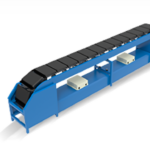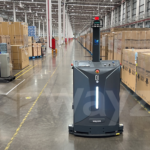In the world of logistics and warehouse management, single-piece separation plays a crucial role in ensuring efficient order fulfillment and inventory control. It refers to the process of isolating individual units from a bulk quantity, making them readily available for picking and packing. This seemingly simple process offers significant benefits in terms of accuracy, efficiency, and cost reduction.
Benefits of Single-Piece Separation
- Reduced picking errors
By presenting individual items instead of bulk quantities, the risk of picking incorrect items is significantly minimised. - Improved picking speed
Pickers can quickly and easily access specific items without having to dig through piles or bundles. - Increased order fulfillment accuracy
Accurate picking leads to fewer errors and returns, ultimately improving customer satisfaction. - Optimised space utilisation
Single-piece storage allows for efficient use of warehouse space, eliminating the need for dedicated areas for bulk storage. - Enhanced inventory control
Real-time inventory tracking becomes easier and more accurate when items are stored and managed individually. - Reduced labor costs
Automation of single-piece separation processes can significantly lower labor expenses associated with manual sorting and picking.
Methods of Single-Piece Separation
Several methods can be used to achieve single-piece separation, each with its own advantages and limitations.
- Manual separation
This traditional method involves manually sorting and separating items from bulk quantities. While cost-effective, it can be time-consuming and prone to errors, especially with large volumes. - Automated sorting systems
Robotic arms and conveyor belts can be programmed to automatically pick and separate items from bulk containers, significantly improving speed and accuracy. - Pick-to-light systems
These systems utilise lights and displays to guide pickers to the exact location of individual items within the bulk storage area. - Kitting and pre-assembly
Items can be pre-assembled or grouped into kits based on specific order requirements, simplifying the picking process and reducing errors. - Vision technology
Cameras and sensors can be used to identify and separate items based on their size, shape, or other characteristics, offering a highly automated and accurate solution.
Choosing the Right Method
The best method for single-piece separation depends on various factors, including:
- Volume of items to be separated
High-volume operations may benefit from automation, while smaller volumes may be manageable with manual separation. - Item characteristics
The size, shape, and fragility of the items may influence the choice of separation method. - Budgetary constraints
Automation solutions may require a higher initial investment but can offer significant cost savings in the long run. - Accuracy requirements
If accuracy is critical, automated sorting systems or vision technology may be preferred.
Future of Single-Piece Separation
Technological advancements continue to shape the future of single-piece separation.
- Integration with AI and machine learning
This can optimise sorting algorithms and automate decision-making processes. - Advanced robotics
Robots can become even more adept at handling diverse items with greater dexterity and precision. - Smart bin technology
Bins equipped with sensors and cameras can track inventory levels and automatically trigger replenishment procedures.
These advancements will contribute to further enhancing the speed, accuracy, and efficiency of single-piece separation, ultimately streamlining inventory management and order fulfillment processes across various industries.
Step into the future with SmartlogitecX, a WayZim Technologies venture, reshaping Warehouse Automation in Australia and New Zealand. SmartlogitecX combines global tech insights with local market expertise. Ready to upgrade your logistics? Our sales team is on hand to craft your ideal automation strategy.



